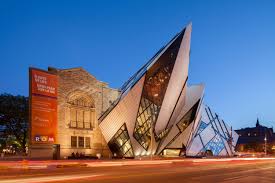The Timeless Beauty of Historical Architecture
Historical architecture is a testament to the creativity, craftsmanship, and cultural values of past civilizations. From ancient wonders like the Pyramids of Egypt to medieval castles in Europe and colonial buildings in the Americas, historical architecture tells stories of human ingenuity and endurance.
Preserving Heritage
Preserving historical architecture is essential to maintaining a connection with our past and understanding how societies have evolved over time. These architectural marvels serve as physical reminders of our history, traditions, and achievements.
Architectural Styles
Historical architecture encompasses a wide range of styles influenced by different periods and regions. From the grandeur of Gothic cathedrals to the elegance of Renaissance palaces and the simplicity of Colonial structures, each style reflects the artistic sensibilities and technological advancements of its time.
Symbolism and Significance
Historical buildings often carry symbolic meanings that reflect the values and beliefs of the societies that created them. Whether it’s a religious temple, a royal palace, or a civic monument, these structures convey messages about power, faith, identity, and social hierarchy.
Architectural Conservation
Efforts to conserve historical architecture involve not only preserving physical structures but also safeguarding their cultural significance for future generations. Conservationists work tirelessly to protect these treasures from natural disasters, urban development pressures, pollution, and neglect.
The Legacy of Historical Architecture
As we admire historical architecture today, we pay homage to the visionaries who designed these masterpieces centuries ago. Their enduring legacy reminds us of the beauty and resilience of human creativity, inspiring us to cherish our architectural heritage for generations to come.
Understanding Historical Architecture: Key Questions and Answers
- What are the 4 types of architecture?
- What is the study of historical architecture?
- What does a historical architect do?
- What is the meaning of historical in architecture?
What are the 4 types of architecture?
There are four main types of architecture that have influenced the built environment throughout history: Classical architecture, Gothic architecture, Renaissance architecture, and Baroque architecture. Each of these architectural styles represents distinct periods and design principles that have left a lasting impact on the world’s architectural heritage. Classical architecture is characterized by its emphasis on symmetry and proportion, drawing inspiration from ancient Greek and Roman structures. Gothic architecture is known for its pointed arches, ribbed vaults, and flying buttresses that create grand cathedrals and churches. Renaissance architecture reflects a revival of classical forms with a focus on harmony, perspective, and humanism. Baroque architecture is characterized by its dramatic use of light, color, and ornamentation to create elaborate and dynamic buildings that evoke a sense of movement and emotion.
What is the study of historical architecture?
The study of historical architecture is a multidisciplinary field that examines the evolution, significance, and cultural context of architectural structures from the past. Scholars and researchers in this field analyze various aspects of historical buildings, such as their design, construction techniques, materials used, stylistic influences, and social functions. By studying historical architecture, experts gain insights into the technological advancements, artistic trends, societal values, and political dynamics of different time periods and civilizations. This comprehensive examination helps us understand how architectural styles have developed over time and how they continue to shape our built environment today.
What does a historical architect do?
A historical architect specializes in the preservation, restoration, and adaptive reuse of buildings with historical significance. They combine their expertise in architecture, history, and conservation to ensure that historical structures are maintained in a way that respects their original design and cultural value. Historical architects conduct research to understand the historical context of a building, assess its condition, develop preservation plans, and oversee restoration projects to ensure that the architectural integrity and authenticity of these valuable landmarks are preserved for future generations to appreciate and enjoy.
What is the meaning of historical in architecture?
The term “historical” in architecture refers to buildings, structures, or designs that have significant cultural, social, or aesthetic value due to their age, historical context, or architectural style. Historical architecture often embodies the characteristics of a particular period in history and reflects the artistic trends, technological advancements, and societal values of that time. By studying historical architecture, we gain insights into the evolution of architectural styles, construction techniques, and cultural influences that have shaped our built environment over the centuries.





